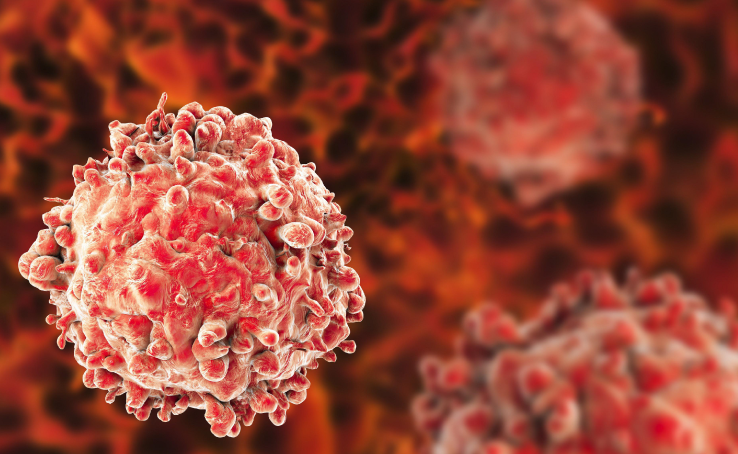Avg Price: $ 3250-$ 55000


Treatment Time
Recovery Time
Hospitalization Days
Success Rate
The name Leukemia originates from the Greek terms 'leukos,' which signifies white, and 'haima,' which signifies blood. This term is employed to describe a wide range of malignancies involving white blood cells. Globally, in 2020, leukemia represented roughly 2.5% of all newly diagnosed cancer cases and 3.1% of cancer-related deaths. The annual incidence rate for new leukemia cases was 14.0 per 100,000 individuals, while the mortality rate was 6.0 per 100,000 individuals. As per estimates, approximately 1.6% of both men and women are diagnosed with leukemia at some point in their lives. Looking ahead to 2023, it is projected that there will be 59,610 new cases of leukemia, with an estimated 23,710 individuals succumbing to this disease.
This underscores the need for development of new cutting-edge leukemia treatment therapies and framing of strategies to enhance their availability and accessibility to the pave path for leukemia free world. Because of highly complex nature of this treatment, there is a significant requirement for a high level of procedural expertise and sophistication. India stands out on the global stage for its exceptional proficiency among surgeons in conducting such procedures, owing to their remarkable skills and access to advanced healthcare facilities. Therefore, people from around the world currently have excellent opportunities to avail services from best doctors for leukemia treatment and best hospitals for leukemia treatment in India.
Leukemia is a form of blood cancer characterized by the rapid proliferation of abnormal blood cells. This unregulated growth occurs within the bone marrow, where a significant portion of the body's blood is produced. Typically, leukemia cells consist of immature white blood cells still in the developmental stage.
Leukemia classification can be divided into two main categories:
Therefore, based on above mentioned classifications leukemia prevails in following forms:
There are also other, less common types of leukemia, such as hairy cell leukemia, myelodysplastic syndromes, and myeloproliferative disorders.
Why is Leukemia Treatment needed?
Individuals diagnosed with acute leukemia should receive prompt treatment due to the cancer's potential for rapid advancement. The primary objective of treatment is to eradicate any traces of leukemia within the body and alleviate associated symptoms, a state referred to as remission. After achieving remission, additional therapeutic measures may be administered to prevent the recurrence or relapse of the disease. These supplementary treatments are categorized as consolidation therapy or maintenance therapy. For patients in whom complete eradication of the disease via chemotherapy fails, consideration may be given to bone marrow or stem cell transplantation.
As cancer treatments often yield side effects, delaying treatment can prolong the period before these side effects need to be managed. This management method is called active surveillance or watchful waiting. During this, the disease is closely monitored. In the case of chronic leukemia necessitating treatment, active surveillance is generally proved effective in managing the disease and its associated symptoms. While chemotherapy rarely offers a cure for chronic leukemia, maintenance therapy can maintain the disease in a state of remission.
Take Charge of Your Health
Book a Free Consultation

The treatment plan for Leukemia depends on various factors. Your doctor will determine the appropriate course of treatment based on factors such as your age, overall health, the specific type of leukemia you have, and whether it has spread to other parts of your body, including the central nervous system.
Typical leukemia treatment options are:
Doctors may detect chronic leukemia through a routine blood test, even before any symptoms become apparent. In such cases, or if you exhibit signs or symptoms suggestive of leukemia, your doctor will conduct diagnostic evaluation which includes:
Your Health is Our Priority
Book a Free Consultation
Depending on your treatment strategy, you may undergo leukemia treatment continuously over the long term or in distinct phases. Typically, phased treatment consists of three components, each with a specific objective:
Certain side effects of leukemia treatment may be temporary, resolving once the treatment is completed, while others can persist for a longer duration. It's crucial to communicate your feelings and experiences with your healthcare team, as they typically have methods to assist you. Here are some common side effects and considerations:
Fatigue (Tiredness): Fatigue can manifest as complete physical or mental exhaustion and may lead to mental fog. Managing fatigue involves finding a balance between rest and activity and understanding your limits by monitoring your symptoms.
Anemia: Anemia signifies a low level of red blood cells, which can result in tiredness and breathlessness. If you have anemia, you may be offered a blood transfusion as a treatment.
Infections: Blood cancer and treatments like chemotherapy can weaken your immune system, making you more susceptible to infections. It's essential to recognize the signs of infection for prompt antibiotic treatment. You can take measures to reduce your infection risk, and more information on this is available.
Mucositis (Sore Mouth or Gut): This condition can cause discomfort in your mouth or along the lining of your gastrointestinal tract, which includes your esophagus, stomach, and intestines. It's a common side effect of chemotherapy and radiotherapy, but it can be managed with medications and typically improves over time.
Hair Loss or Thinning: Hair loss can occur due to chemotherapy and other treatments, but there are various ways to cope with it, and your hair will typically grow back once treatment concludes.
Changes in Bowel Habits: You may experience diarrhea or constipation as side effects of treatment. Medications and dietary adjustments can help manage these issues, and you can consult your healthcare team for guidance.
Nausea and Vomiting: Feeling nauseous or vomiting can be side effects of treatment, but anti-sickness drugs can provide relief. Eating small, light meals or snacks and consuming items like peppermint tea, ginger-containing foods, or fizzy drinks can help alleviate nausea.
Fertility Issues: Chemotherapy can impact fertility, so it's crucial to discuss this concern with your healthcare team. They can provide information on fertility preservation options. During chemotherapy, its essential to take precautions to avoid pregnancy, as the drugs may harm the baby.
Long-Term Health Problems: Some leukemia treatments may lead to other long-term health issues, such as thyroid, heart, or lung problems. The specific risks and benefits of your treatment will depend on its type and strength, so consult your healthcare team for more information on these potential consequences.

While leukemia does not currently have a definitive cure, it's important to note that some individuals do attain prolonged periods of remission. Achieving a state of being cured from leukemia implies that the cancer is completely eradicated, will not return, and necessitates no further treatment. However, ascertaining this with certainty in the case of leukemia can be challenging.
In contrast, long-term remission denotes the absence of any detectable cancer, whether with or without ongoing treatment. Remission can persist for varying durations, ranging from a few weeks to several years, and in some instances, leukemia may never recur. If it does resurface, your healthcare provider may propose new treatments aimed at achieving remission. The determination of whether you are cured of leukemia is best addressed by your healthcare team.
Avail the Expert Health Advice
Book a Free Consultation
Advancements in the treatment of blood cancers have led to an increase in the number of individuals living with their condition. Surviving cancer presents its own set of challenges and opportunities. Many people encounter periods when their illness is well-managed, affording them the chance to resume their normal lives.
Most individuals eagerly anticipate the conclusion of their treatment, as it marks a return to life as they knew it. However, this phase can bring about significant changes. Roles and responsibilities within the family may need to be redefined, and decisions may be required regarding when or how to rejoin the work.
The majority of people adapt successfully to life after treatment. It's important to recognize that this adjustment is a gradual process, and both you and those around you may need time to acclimate to the new circumstances. Having realistic expectations can help prevent feelings of disappointment, anger, or frustration.
People employ various coping strategies when readjusting to life after treatment, and there is no universally right or wrong approach. The concept of "normalcy" may require reevaluation, and some individuals may find it beneficial to seek support, either independently or through trusted friends or family members.
Connecting with others who have undergone similar experiences can be valuable, as they comprehend the complex issues that arise during the adjustment to a new life. Relationship or family counseling can also assist individuals in moving forward as they navigate this transformative phase of their lives.
Excluding age as a factor, there has been little alteration in new Leukemia incidence rates since 2019. However, the mortality rates have witnessed a consistent decline of nearly 2 percent annually since 2009. The National Cancer Institute provides the following statistics on survival rates for the four primary categories of leukemia:
| Types of Leukemia | 5- year Survival Rate | Number of deaths per 100,000 Persons | Age-group with Highest Death Rate |
| ALL | 69.9% | 0.4 | 65-84 |
| AML | 29.5% | 2.7 | 65+ |
| CLL | 87.2% | 1.1 | 75+ |
| CML | 70.6% | 0.3 | 75+ |
The cost of Leukemia treatment in India is quite affordable than many Western nations, while still maintaining world-class quality. The approximate price of this procedure in India ranges from $20000 to $55000 with an average of about $35000, which is approximately one-tenth the treatment incurred in countries like the USA.
| Location | Minimum Cost ($) | Average Cost ($) | Maximum Cost ($) |
| Delhi | $ 1200 | $ 20500 | $ 55000 |
| Mumbai | $ 800 | $ 55000 | $ 60000 |
| Chennai | $ 750 | $ 25000 | $ 45000 |
| Hyderabad | $ 650 | $ 45000 | $ 55000 |
Comparison of cost of Leukemia treatment with other western countries:
| Country | Minimum Cost ($) | Average Cost ($) | Maximum Cost ($) |
| USA | $106,000 | $1,33,000 | $160,000 |
| Australia | $43,000 | $47,000 | $51,000 |
| Canada | $53,000 | $66,500 | $80,000 |
Following are the factors affecting cost of Leukemia treatment in India:
The cost for diagnostic tests and evaluations linked to Leukemia treatment can fluctuate due to several factors. These factors include the particular tests needed, your choice of healthcare facility or clinic, and your geographical location. The following is the approximate diagnostic cost split for this surgery:
| Diagnostic Procedure | Cost |
| Biopsy | USD 429 to USD 500 |
| Endoscopy | USD 19 to USD 386 |
| X-Ray | USD 10 to USD 25 |
| PET Scan | USD 193 to USD 800 |
| Fine Needle Aspiration (FNA) of the lymph nodes | USD 10 to USD 32 |
| Magnetic Resonance Imaging (MRI) scan | USD 26- USD 321 |
| Computerized Tomography (CT) Scan | USD 26 to USD 400 |
MedFlick, your trusted healthcare companion, is dedicated to ensuring that your medical journey goes as smoothly and successfully as possible.
Fostering expertise backed by commitment, resilience and years of experience, we connect you to a wide network of India's best doctors
Explore the most advanced, reputable and trusted hospitals in India, offering the highest levels of clinical and surgical excellence

The worlds most trusted personalized health community with more than 1,00, 000 members that share their journey, experiences and health insights. Join your community and get access to make informed health decisions.
Explore


